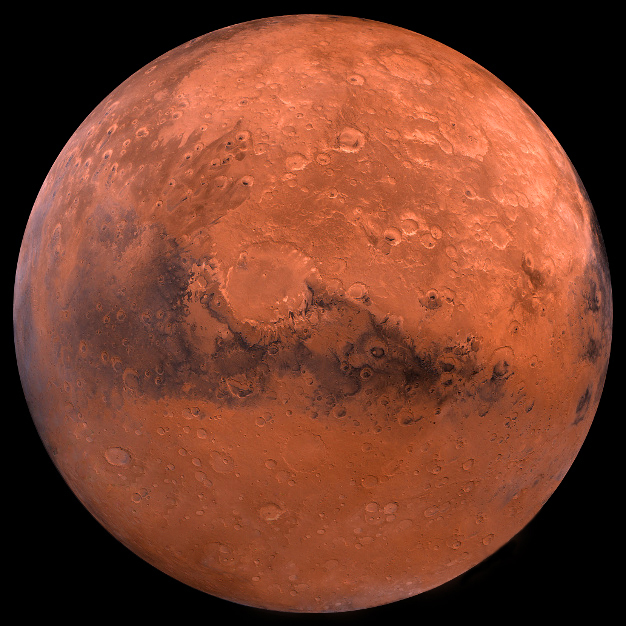
Mars may have clay under its South Pole, not liquid water, as some researchers previously suspected. After years of scientific mystery, a new study is one of three recent works that give evidence for alternate explanations to the Martian lakes hypothesis. In 2018, an Italian team of researchers noted that the unusual way radar bounced off a region of the Red Planet might be explained by an underground lake about twelve miles in width and one mile below the surface of the Planum Australe region, near Mars’ South Pole.
“Almost immediately, though, the skepticism in the science community started showing up,” says Isaac Smith, a planetary scientist at York University in Toronto, Canada, who led the new study, published in the Journal Geophysical Research Letters. Smith’s study doesn’t discount the possibility of liquid water anywhere under Mars, and good evidence confirms that frozen water likely exists on the red planet, but Smith says current models of Mars suggest that the temperature one mile below the planet’s south pole is too cold for liquid water.
Follow up works by various groups have pointed out issues with the idea, suggesting it was indeed unlikely that an entire lake could remain liquid so far from the warmth of the core. A lake would require some pretty unlikely circumstances, a heat source or, if not, then a tremendous amount of salt to help lower the freezing point of underground water.
One study, published in 2019, found that regardless of how salty the underground lake is, it would require a heat source, like nearby magma, to stay liquid. And a more recent study by NASA’s Jet Propulsion Laboratory scientists showed that these radar spots show up in many other locations, making it less likely that each spot would have both a heat source and plentiful salt.
As enticing as it would be for there to be water under Mars’ South Pole, Smith acknowledges, he thinks clay is more plausible, largely because it requires “no caveats”, he says, like underground heat sources and dense salt pockets.
In February, Smith was working on a different project, studying the clay found in Mars’ massive “Grand Canyon” called Valles Marineras. They measured electrical properties of wet and dry clays in the lab to see what kind of radar signal a spacecraft might see from them. Smith and his team realized that frozen, wet clay would reflect radar in a way similar to water. “That would answer the lake question right away,” he says.
Its always temping to believe there are more things in our solar system and universe that would be conducive to the discovery of life, however, sometimes these may be wishful thinking.
